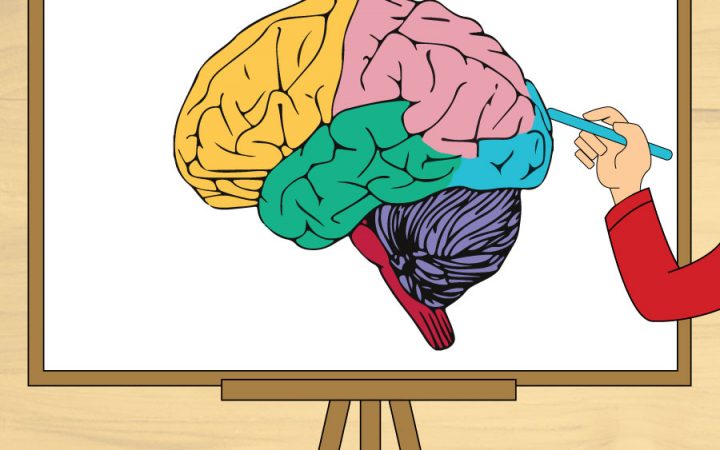According to USA Today, education is one of the most popular college majors in the United States today. Keene State College is known for an intensive and robust education preparation program, and even the faculty at KSC themselves take a long road to eventually teach at the collegiate level.
Being a strong professor is not something that just happens; that too takes years of work.Becoming a successful teacher requires many things: vast knowledge, public speaking skills, interpersonal skills and so on. Beyond that, being a truly influential teacher at any level is something special. The amount of work that goes into becoming an educator has brought rise to the question: Is teaching an art form?
Warder
Teachers truly can have an impact on their student’s entire lives, as proven by Graham Warder, an associate professor of history at Keene State. He spoke of a particular history teacher he had in high school and said that he “Really challenged us. He didn’t talk down to us and just opened all kinds of new worlds and ideas.” This ended up sparking his interest in history.
The mutual respect Warder’s teacher had with his students had a large influence on his life, as he ended up pursuing his doctorate in history; however, he did not initially have plans to become a teacher. He was a painter at first, while working on his degree, and ended up landing at KSC.
Rogers
The same goes for adjunct professor of music at KSC, Tim Rogers, who worked on his degree of music, not planning to go into teaching until the factory that he worked at closed down, prompting him to look for new employment. He then ended up at Keene State and has been here for over two decades.
Sturtz
The path to becoming an educator was much more clear-cut for assistant professor of education and weekend activities director at KSC, John Sturtz. He was a computer instructor and weekend activities director, working with sixth to eighth graders. While there, he observed their “innate curiosity” and said, “The middle school population is such a unique cast of characters.” He cited this experience with students as what got him to get his credentials and degree together in order to pursue the field further.
When asked whether or not he’s changed his teaching style over his two decades at Keene State, Professor Rogers said he has. He reads student evaluations about his class carefully, even saying that he wishes he were at the school more often to help students. Since he is an adjunct professor, he is only on campus two to three days a week.
Professor Warder talked about the introduction of technology to education since the start of his career in 2000 and said that he has tried to incorporate that with online quizzes and readings, but also noted that he isn’t “giving up on books.” He also compared high school to college and said that he could never teach high school. He prefers college, as he gets to treat his students like adults and appreciates the leniency he has in preparing lessons.
Sturtz has had much experience teaching in his life, especially within age groups. Between working with the spectrum of middle schoolers to college students, Sturtz said, “There are some things that college students and seventh graders share…they’re all humans, they’re all curious. College students have a better way of navigating it…at the end of the day, they’re the curious young minds that want to learn.”
Since being a teacher for younger students, he now teaches at the college level so students can become teachers. He also keeps in contact with his former students and believes that the lessons Keene State has instilled in them has allowed them to use their specific skills in other fields that do not always pertain to education.
In the same vein, Professor Rogers spoke about working with students and said, “I enjoy the subject matter and working with students, especially those that are interested in learning.” Rogers added that he appreciates opening his students up to knowledge, especially about the past and showing them where things came from. Warder mentioned that he prefers smaller class sizes as opposed to larger ones. “You get to know the students and you can focus much more on things like writing and research,” Warder said. Like the other professors, Warder acknowledged valuing a relationship with his students. In response to whether or not teaching could be considered an art form, Warder said, “Yes, it’s not a science, that’s for sure.
Like art, it does require creativity. I think there is an opportunity for creativity teaching at the college level.” Warder had said earlier that he appreciates working with a college and the level of freedom it gives.
Warder also spoke about the difference between a good lesson and a bad one, laughing as he said, “You can’t learn about the ‘60s by just watching “Forrest Gump.’”
Sturtz responded in a somewhat similar light. “It’s an art and a science,” Sturtz said. “The science part is the way in which individuals employ the skill set. The choices and decisions that they make…that’s where the art comes in. That’s where creativity happens and begins to emerge.”
Rogers said, “Definitely. We could just hand out pieces of paper with information…but with teaching, it is a combination of modifying what the students need.” He also further cited a rather inspirational quote and said, “You don’t teach the subject, you teach people.”
Rogers also added that, “There is no profession as rewarding.”
Noah Drouin can be contacted at ndrouin@kscequinox.com

